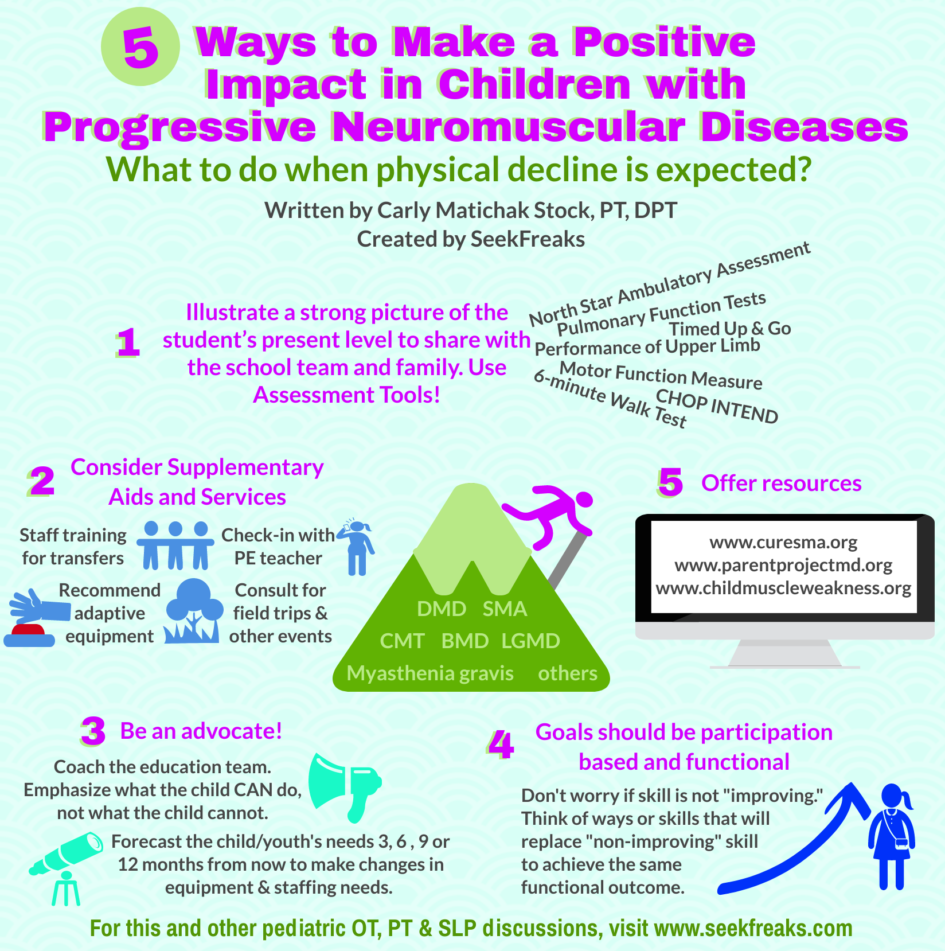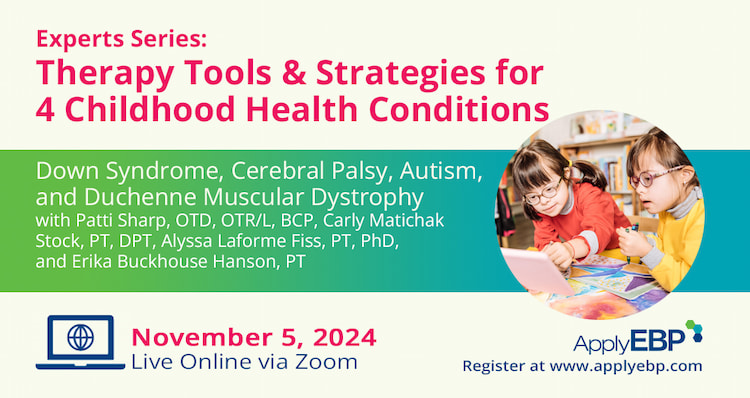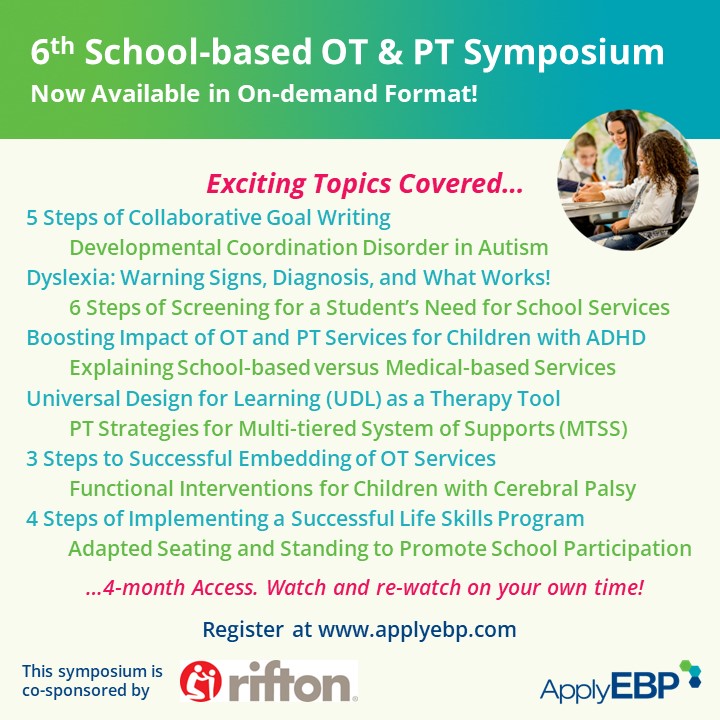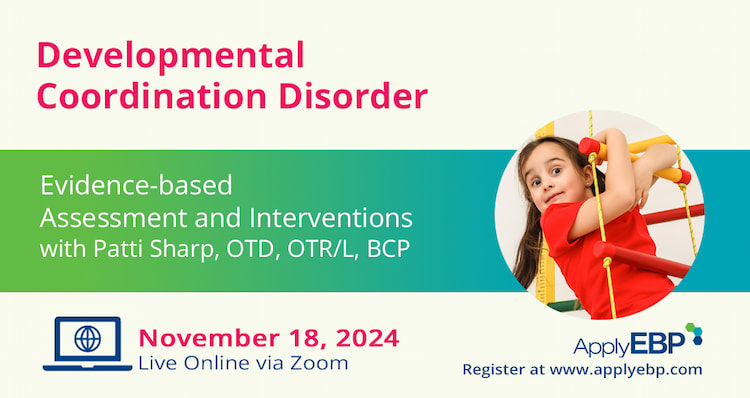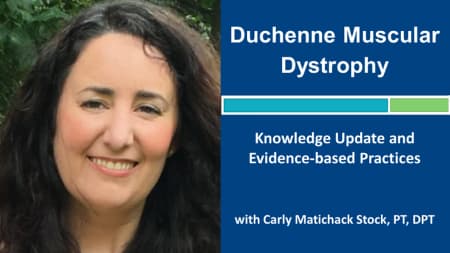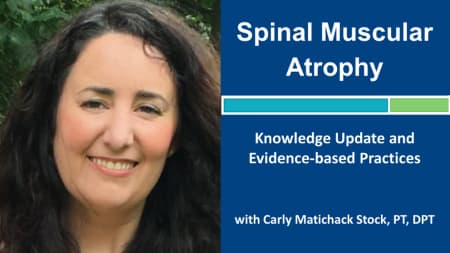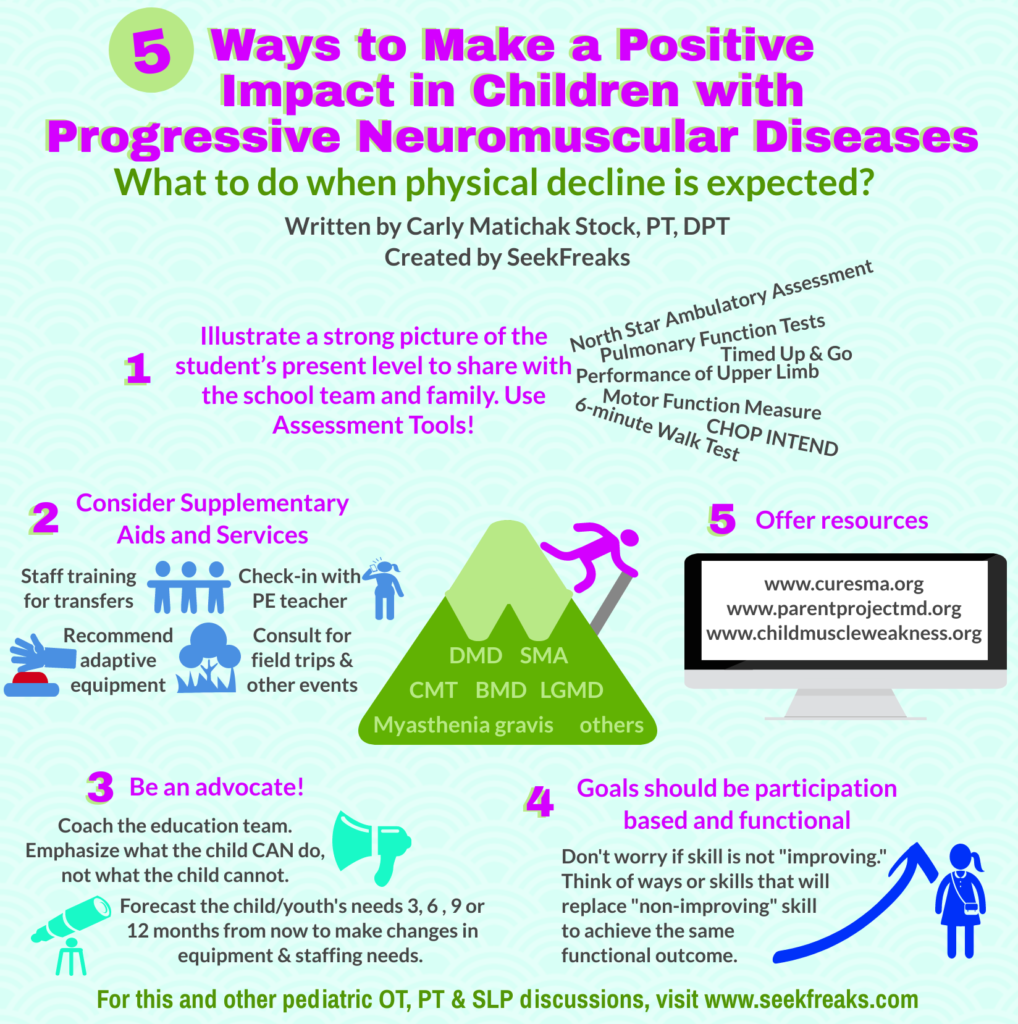
Written by Carly Matichak Stock, PT, DPT. Carly has had the pleasure of working in the realm of pediatrics, including school-based, multi-disciplinary clinics, research, outpatient and inpatient rehabilitation settings. She currently practices in the Harford County Public Schools in Bel Air, Maryland. She is passionate in teaching other therapists to promote function and participation in children and youth with neuromuscular diseases (e.g., DMD, SMA, CMT, etc.) despite the progression expected of these health conditions. Catch her and other experts at the School-based OT & PT Symposiums and her courses on PND.
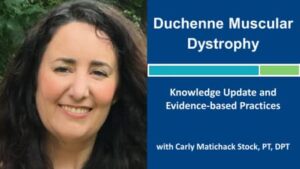

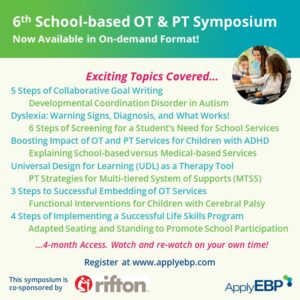
As therapists, we emphasize improvement in skills when it comes to IEP or 504 services. We review the progress quarter after quarter, year after year. The student’s strengths and needs.
So what do you have to offer as a therapist to students who physically decline secondary to their progressive neuromuscular disease?
The answer is A LOT!
You have a unique understanding of the human body and the impact on function and the ability to offer creative solutions to maximize participation.
Here are 5 Ways to make a positive impact in the student’s access and participation in school:
1. Illustrate a strong picture of the student’s present level to share with the school team and family. Use Assessment Tools!
There are many free, reliable and accurate universally-available standardized assessments, that should be completed every 4-6 months, or dependent on rate of progression. By repeating these measures, the student’s change in function will be clearly documented and known by the whole team.
Hear are some of the standardized tests that are appropriate for children and youth with progressive neuromuscular diseases:
- The North Star Ambulatory Assessment (NSAA)
- Performance of Upper Limb (PUL)
- Timed Up & Go (TUG)
- Motor Function Measure (MFM)
- CHOP INTEND
- 6 Minute Walk Test
- Pulmonary Function Tests
Make sure to read the manual or proper administration of the test, to ensure you are using the appropriate test for the age, diagnosis and functional level of the child.
And, don’t forget the “basics” like range of motion, strength, balance.
After completing the assessments, capture the student’s strengths and needs, and relate to the child’s current function and participation in school. For example, if a child has decreased pulmonary function, how does this impact the student’s ability to
- Answer questions loud enough in class?
- Play and interact with other children on the playground?
Then as a team, the strengths and needs can be addressed through services, goals, and supports to optimize access and participation.
2. Consider Supplementary Aids and Services
Maximize the use of this section of the IEP!
We can offer our unique expertise to the whole team through consult services. Staff training is so important for success.
For example, you could coach the staff on transfer techniques and do mini- check ins throughout the year or meet with Physical Education teachers to emphasize the importance of avoiding eccentric exercises.
Don’t forget those special events like concerts, field trips and community interventions. The opportunities for consult are plentiful and make an everyday difference in the lives our students, staff and families.
How about adaptive equipment and assistive technology?!
Compensatory strategies are powerful to allow students to be an active participant in their education. Choose equipment that is reliable and modifiable.
It should be able to grow with the student and modified with functional regression.
How can assistive technology help? Voice to text, sticky keys, using a light to “raise your hand”, etc. Be Creative! Think of participation!
Many widely available options are available including controlling the environment via voice or switch from adaptive and mainstream retailers.
3. Be an Advocate
This circles back to the importance of us as therapists acting as educators or coaches for the IEP team.
Advocate for our students by emphasizing what they CAN do, not what they cannot. Let our students be independent with the use of adaptations.
Promote and support self-advocacy goals. Can they direct an adult in a transfer? Can they appropriately request a break? Read SeekFreaks’ article on Enhancing Self-Determination for more ideas.
Be forward thinking with what supports they may need using assessment results to forecast the child/youth’s needs 3, 6, 9, 12 months from now, based on your assessment. Also, take into consideration any changes or needed changes in staffing and equipment. Identify when supports may be faded by developing benchmarks.
Always be direct in reporting regression, but always include solutions for compensation.
4. Goals should be Participation Based and Functional
Focus on access and participation. Don’t worry if a particular skill is not “improving”. Think of other ways or skills to replace the “non-improving” skill that will give you the same outcome.
For example, maybe their goal is not to raise their hand appropriately, but rather to gain attention of the teacher appropriately using assistive technology.
Or, if independent ambulation is decreasing, can they still achieve a transition goal with modified independence between two areas of the school?
And don’t forget the goal must be meaningful to the student, have them help identify their goals!
Check out these amazing Seekfreaks articles:
5. Offer Resources
Help the team understand the student’s diagnosis and prognosis, and how they can be of assistance.
Direct the team to resources available like
They have specific educator resources, adaptive physical education resources, and community outreach. Care guidelines are also included for therapists!
If no specific diagnosis is available but muscle weakness is present check out: https://childmuscleweakness.org/.
Identify local community resources like adaptive sports, therapeutic recreation, or support groups.
Offer ways for the student to shine with their strengths, that are not affected by their diagnosis like design, legos, creative writing or whatever makes their hearts sing!
You, as a therapist, may be the only person in the team that has the expertise to find a solution to allow them shine! Share it…
Make a Positive Impact Now!
Join the author, Carly in her Apply EBP Live Courses and Webinars
